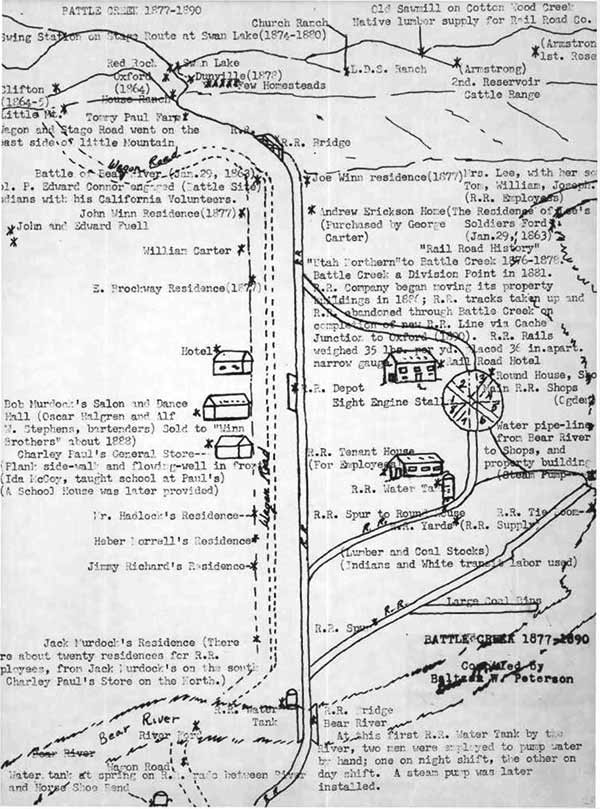Battle Creek, Idaho ~ Index
Battle Creek, in Franklin County, Idaho, it seems needless to say, was the setting for the Indian massacre in 1863. The Utah Northern Railroad was built to there in 1878 and it was made a division point in 1881. The place seemed to boom into a town almost overnight. The railroad company built repair shops, with an eight-stall round house and company houses and buildings to house the foreman and employees and their families.

To look at the place and see it as it is today, we can scarcely realize that the town had once had a population of over one hundred. Besides the railroad property, the town consisted of a store, which was owned by Charles Paul, a hotel, an amusement hall, two saloons and about fifteen dwellings. The first house in Battle Creek was built in 1877, a year before the railroad company started to build up the town. The first house, a one-room log cabin with a dirt roof, was built by John Winn. Just a little later during the same year, Joseph Winn built a frame house. E. Brockway built a house in 1877.
After the railroad people came in, Esther Winn taught a school free of charge in her own home and any who wished to come, young or old, were welcome. The first public school was taught by Ida McCoy in part of Charles Paul's store building. The tuition was paid by the people.
Some of the people in the town were Latter-day Saints. However, there was no church organization as the members belonged to the Riverdale ward. There was a Sunday school organization with George Carter, Curtis Hadlock and Heber Morrell in charge. A brass band was organized by a man named Stewart.
The town continued to grow until 1886 when the railroad company began moving its buildings to Eagle Rock (now Idaho, Falls) and in 1890 removed the tracks. With the moving of the railroad property, the people moved along too. So today there is no town at Battle Creek. Just an average of five or six families live there.
When the farmers began to plow up the old battle grounds, quite a number of relics were found, such as old gun barrels, rusty knife blades, some human bones, bows and arrow heads. One of the guns which was found had a bullet just started into the muzzle, indicating that the one using it had fallen dead before he had time to finish loading… all testimonies of the bloody conflict which took place there.